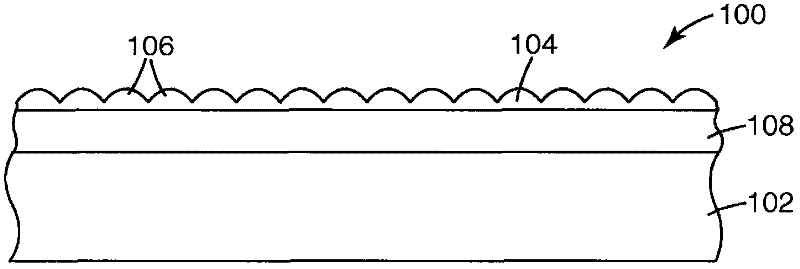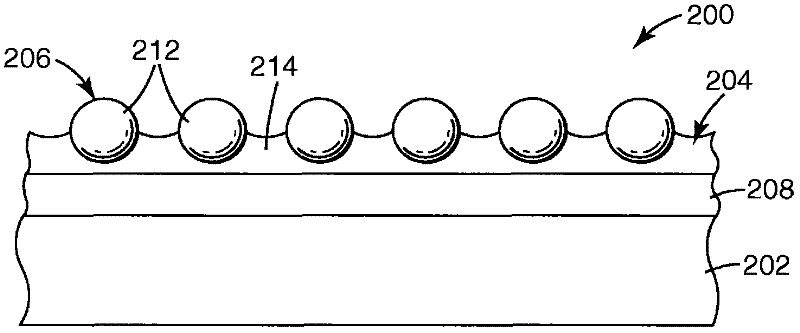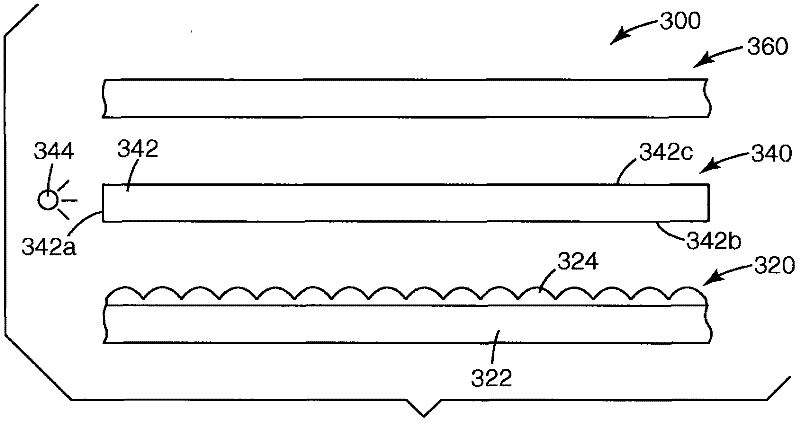Backlight suitable for display devices
A display device and backlight type technology, applied in the field of backlight sources, can solve problems such as light loss
- Summary
- Abstract
- Description
- Claims
- Application Information
AI Technical Summary
Problems solved by technology
Method used
Image
Examples
example 1
[0071] Figure 6 and Figures 7A-7C It can be used to compare the bulb hiding capability of the new back reflector laminate with that of the available white diffuse back reflector and the available specular back reflector. These figures were obtained using a Sharp 30" LCD TV with 10 bulbs, Model No. LC-30HV4V. The original TV had 12 CCFL bulbs and a white back reflector. For the purposes of these examples, the back reflector device to be modified. Figure 6 are digital images taken with a digital camera (Photometric Color CCD Light Measurement System of Radiant Imaging Co, (Duvall, Washington, USA)). The vertical lines show where the luminance distributions are obtained for three different back reflector areas, resulting in Figures 7A-7C .
[0072] Using the original TV, you can see the image of the CCFL bulb on the screen, which means that the brightness uniformity is poor, which is the case in Figure 6 the leftmost part of and Figure 7A shown in Figure 7A for along ...
example 2
[0076] This example shows that exemplary reflector stacks according to the present invention can improve brightness uniformity more effectively than conventional diffuse reflectors. The backlight in this example was a test bench with a 35mm bulb pitch and a 17mm cavity depth, which is close to a conventional 12 bulb based 32" liquid crystal digital television (LCDTV). The top film consists of a 2mm diffuser plate and is coated on DBEF with BEF prism on it (DTV).
[0077] With the exception of an exemplary reflector stack according to the invention (which is identical to the reflector stack in Example 1), the output luminance of diffuse reflective films including common diffuser films with different haze levels was tested in a test bench to be uniform degree of improvement. Diffusion films having haze levels of 35%, 45%, and 60% (measured by a Haze-gard Plus haze meter manufactured by BYK Gardner (Silver Spring, Maryland, USA)) were laminated to the ESR and tested on the ESR. ...
example 3
[0079] For this example, the clear layer was the same beaded diffuser used in Example 1 - a beaded diffuser "OPALUS BS-04" from Keiwa with a thickness of 140 μm on a 100 μm polyethylene terephthalate substrate, which The haze was 89.5% as measured with a Haze-gard Plus haze meter from BYK Gardner (Silver Spring, Maryland, USA). The clear layer was laminated to the ESR film using Optl pressure sensitive adhesive (PSA).
[0080] Three test stands with bulb spacing of 25mm, 30mm and 35mm were used. Different combinations of front films were used, including commercially available beaded diffuser (GD), DBEF (D400), BEF, and DBEF with BEF for LCD TVs. A standard white reflector and a back reflector laminate according to the invention were used as back reflectors. Figure 9 and Figure 10 Test results are shown comparing the performance of a back reflector laminate according to the invention ("Modified ESR") to that of a conventional white diffuse back reflector ("Standard White")...
PUM
| Property | Measurement | Unit |
|---|---|---|
| diameter | aaaaa | aaaaa |
| refractive index | aaaaa | aaaaa |
Abstract
Description
Claims
Application Information
 Login to View More
Login to View More - R&D
- Intellectual Property
- Life Sciences
- Materials
- Tech Scout
- Unparalleled Data Quality
- Higher Quality Content
- 60% Fewer Hallucinations
Browse by: Latest US Patents, China's latest patents, Technical Efficacy Thesaurus, Application Domain, Technology Topic, Popular Technical Reports.
© 2025 PatSnap. All rights reserved.Legal|Privacy policy|Modern Slavery Act Transparency Statement|Sitemap|About US| Contact US: help@patsnap.com



